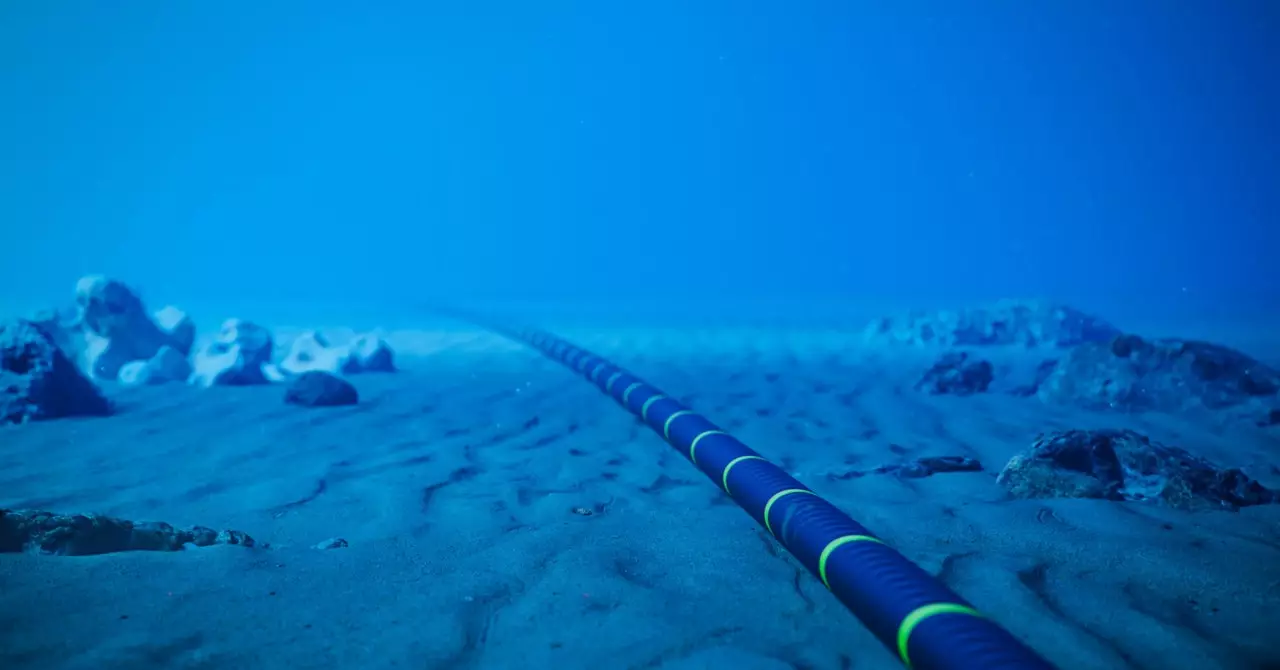Meta has recently unveiled its ambitious Waterworth Project, a groundbreaking initiative set to establish a monumental 50,000-kilometer network of undersea cables connecting five continents. This venture aims to strengthen not only Meta’s oversight over its vast digital landscape but also to ensure that the necessary infrastructure is in place to support the rapid evolution of its products, particularly those leveraging artificial intelligence. Given that submarine cables currently facilitate over 95 percent of intercontinental internet traffic, the significance of this project cannot be overstated.
Described as a multibillion-dollar investment intended to enhance the reliability and scale of global internet infrastructure, the Waterworth Project will establish three new oceanic corridors. These corridors are envisioned to provide high-speed connectivity vital for fostering AI innovation worldwide. Meta’s announcement highlights that the project will involve more than just the installation of cables; it represents a holistic approach to reshaping the digital landscape by tapping into emerging markets with substantial growth potential.
With the proposed cable surpassing the circumference of the Earth, it is slated to become the longest undersea cable in existence. Strategic landing points have been identified in key locations such as India, the United States, Brazil, and South Africa. This interconnected web is crucial for facilitating communication and commerce across these regions, particularly as globalization continues to accelerate.
Among the most noteworthy beneficiaries of the Waterworth initiative is India, where there has already been considerable investment in digital infrastructure. Meta’s newly proposed network is seen as a way to catalyze further growth in the Indian tech ecosystem. The platform’s post underlines that the project will play a crucial role in propelling India toward achieving its ambitious digital economy goals.
A recent joint statement issued by Indian Prime Minister Shri Narendra Modi and President Donald Trump emphasizes the importance of undersea connectivity in bolstering cooperation between the two countries. Their endorsement of Project Waterworth indicates a broader geopolitical interest in enhancing digital infrastructure across the Indian Ocean region, highlighting its significance in a global context.
The technology underpinning the Waterworth Project is equally impressive. Featuring an architecture with 24 fiber pairs, the cables will be designed to optimize deep-sea routing, with depths reaching up to 7,000 meters. This focus on technological innovation is complemented by Meta’s commitment to improving burial techniques in high-risk areas, such as coastal zones where ship anchors and other environmental factors could pose a risk to cable integrity.
Meta’s prior experience in developing over 20 undersea cables, in partnership with various stakeholders, lays a solid foundation for the execution of the Waterworth Project. Notably, this will be the first undersea infrastructure project that Meta will own entirely, marking a significant strategic shift for the company within this competitive arena.
With the Waterworth initiative, Meta positions itself as a formidable competitor to established players such as Google, which operates around 33 undersea cable routes, many of which are solely owned. Furthermore, rival tech giants like Amazon and Microsoft are also vying for a share in this vital sector, primarily by acquiring capacity or sharing ownership of existing cables.
The stakes are increasingly high as these companies recognize that robust, fast, and reliable internet connectivity forms the backbone of their services and future growth, particularly in areas such as cloud computing and AI.
The Waterworth Project is more than just a technological endeavor; it signifies a transformative chapter in global connectivity. As nations and corporations relentlessly pursue expanded digital capabilities, initiatives like Waterworth will likely play a central role in shaping the future of internet infrastructure. The interconnectivity fostered by such projects has the potential to bridge gaps in technology access and drive economic development in emerging markets, setting the stage for a more interconnected world where ideas, services, and innovations flow freely across digital frontiers.


Leave a Reply